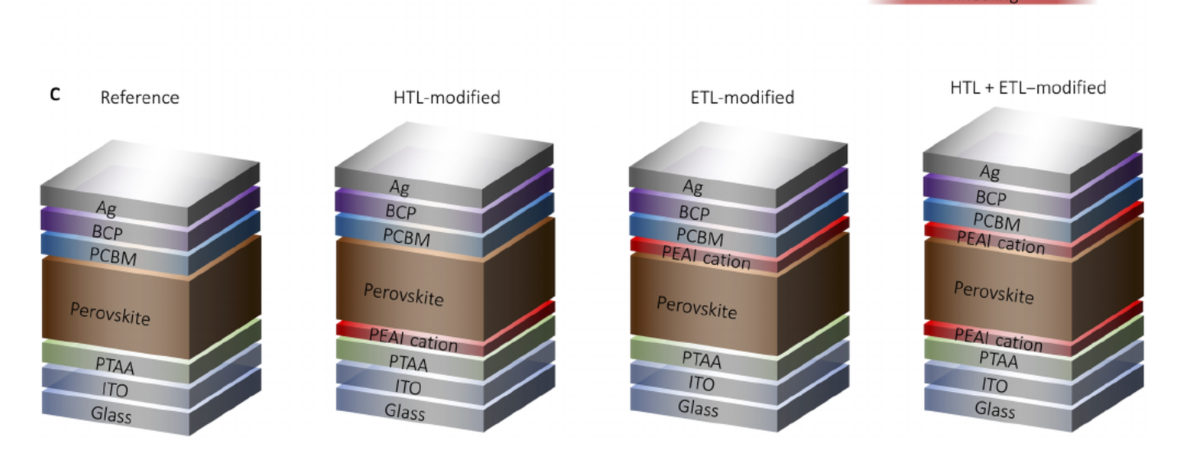A group of researchers from the Technische Universität Dresden in Germany and the University of Pavia in Italy has developed a perovskite solar cell with an inverted configuration (p–i–n) boasting a remarkable power conversion efficiency of 23.7%.
Traditionally, inverted perovskite cells have lower efficiencies compared with solar cells featuring a conventional configuration (n-i-p), due to weaker current extraction and nonradiative recombination losses that limit the device photovoltage and fill factor.
The Italian-German group claim to have overcome these issues by modifying the hole transport layer (HTL)/perovskite and perovskite/electron transport layer (ETL) interfaces by introducing a series of large organic cations such as 2-phenylethylammonium iodide (PEAI), 4-chloro-phenylethylammonium iodide (Cl-PEAI), and 4-fluoro-phenylethylammonium iodide (F-PEAI), in very low concentration.
An antisolvent was dispensed onto the perovskite solution shortly before the end of the spin-coating step to improve the crystallization process of the perovskite layer.
“We find that this approach does not change the bulk perovskite crystal structure or its dimensionality but rather improves the interfaces by facilitating high-quality film formation on top of the HTL and inducing efficient defect passivation at the perovskite/ETL interface,” the academics said. “We show that the modification of the buried bottom interface leads to a more homogeneous film formation and the elimination of nanovoids at the perovskite/HTL interface.”
Popular content
Four different solar cells were fabricated by the scientists: a reference cell; a cell with a modified HTL; a device with a modified ETL; and a dual HTL+ETL–modified cell. The dual-modified devices based on F-PEAI were found to combine the improvements observed at each interface and achieved the highest efficiency of 23.7%. This cell also showed a short-circuit current of 1.184 V and a high fill factor of 85%.
“Devices fabricated using F-PEAI cations consistently outperformed those made using the other derivatives,” the researchers emphasized. “We believe that this is associated with the fact that a larger quantity of F-PEAI remains at both the HTL and ETL interfaces.”We
propose that this is associated with differences in the solubility of the PEAI cations.”
The solar cell was presented in the study 23.7% Efficient inverted perovskite solar cells by dual interfacial modification, which was recently published in ScienceAdvances.
This content is protected by copyright and may not be reused. If you want to cooperate with us and would like to reuse some of our content, please contact: editors@pv-magazine.com.



2 comments
By submitting this form you agree to pv magazine using your data for the purposes of publishing your comment.
Your personal data will only be disclosed or otherwise transmitted to third parties for the purposes of spam filtering or if this is necessary for technical maintenance of the website. Any other transfer to third parties will not take place unless this is justified on the basis of applicable data protection regulations or if pv magazine is legally obliged to do so.
You may revoke this consent at any time with effect for the future, in which case your personal data will be deleted immediately. Otherwise, your data will be deleted if pv magazine has processed your request or the purpose of data storage is fulfilled.
Further information on data privacy can be found in our Data Protection Policy.